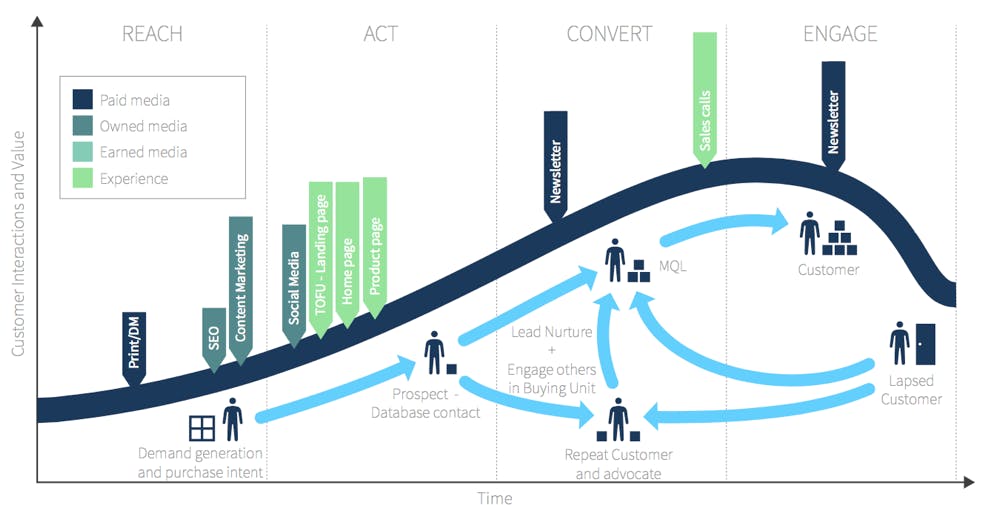Solar Innovations and Trends
Your source for the latest in solar technology and energy solutions.
Player Lifecycle Marketing: Keeping Your Players Hooked from Sign-Up to Stardom
Unlock the secrets of player lifecycle marketing and discover how to turn new sign-ups into loyal superstars!
Understanding the Player Journey: Key Stages from Onboarding to Engagement
Understanding the player journey is vital for creating a seamless gaming experience that retains users from the very first interaction. The journey can be broken down into key stages, starting with onboarding. This initial phase involves introducing new players to the game mechanics, controls, and overall objectives. Effective onboarding should include elements such as clear tutorials, intuitive user interfaces, and engaging first levels that capture the player's interest. By investing in this phase, developers can significantly reduce drop-off rates and ensure that players are well-equipped to dive deeper into the gaming experience.
Following the onboarding process, the next crucial stage is engagement. This is where players begin to develop a connection with the game, spending more time exploring its features and challenges. To maximize engagement, it’s essential to implement mechanisms such as rewards, achievements, and community interactions that encourage players to return consistently. Leveraging data analytics can also help in understanding player behavior, allowing developers to tailor experiences that align with user preferences. By successfully guiding players from onboarding to engagement, developers can foster a loyal player base that is more likely to invest in additional content and features.

Counter-Strike is a popular first-person shooter game that pits teams of terrorists against counter-terrorists in intense multiplayer matches. Players must use strategy, teamwork, and skill to complete objectives, eliminate the opposing team, and secure victory. Many gamers enjoy betting on professional matches, and you can find great deals and offers, such as a betpanda promo code, to enhance their gaming experience.
Effective Strategies for Retaining Players: Nurturing Relationships Beyond Initial Sign-Up
Retaining players in a competitive landscape requires a strategic approach that prioritizes nurturing relationships from the moment they sign up. One effective strategy is to implement personalized communication methods, such as tailored emails and in-game messages. By using player data to understand preferences and behaviors, you can send relevant content that keeps them engaged. Additionally, consider creating a monthly newsletter that highlights updates, events, and player achievements, fostering a sense of community and connection.
Another key strategy is to offer incentives for continued play. Rewards such as loyalty programs, exclusive content, or limited-time events can motivate players to come back. Consider incorporating a tiered rewards system that increases in value based on player engagement. Furthermore, creating opportunities for community interaction—such as forums or social media groups—can strengthen relationships by allowing players to share experiences and build friendships, enhancing their overall experience with your game.
How to Measure Player Engagement: Metrics That Matter in Lifecycle Marketing
Measuring player engagement is crucial for the success of any gaming platform. By tracking various metrics, developers can gain insights into user behavior and preferences, ultimately enhancing the gaming experience. Key metrics to consider include session length, which indicates how long players are engaged with the game during each visit; daily active users (DAU), a critical measure of the game's popularity; and churn rate, which reveals the percentage of players who stop playing over a specific period. These metrics provide a foundation for understanding player engagement and identifying opportunities for improvement.
In addition to basic metrics, advanced analytical tools can help delve deeper into player behavior. For instance, retention rate measures the percentage of players who return to the game after their first session, helping identify how well a game retains interest. Furthermore, tracking in-game purchases and social sharing practices can pinpoint monetization opportunities and enhance community-building efforts. By leveraging these key performance indicators (KPIs) and understanding their implications, marketers can effectively adjust their lifecycle marketing strategies to foster a more engaged and loyal player base.